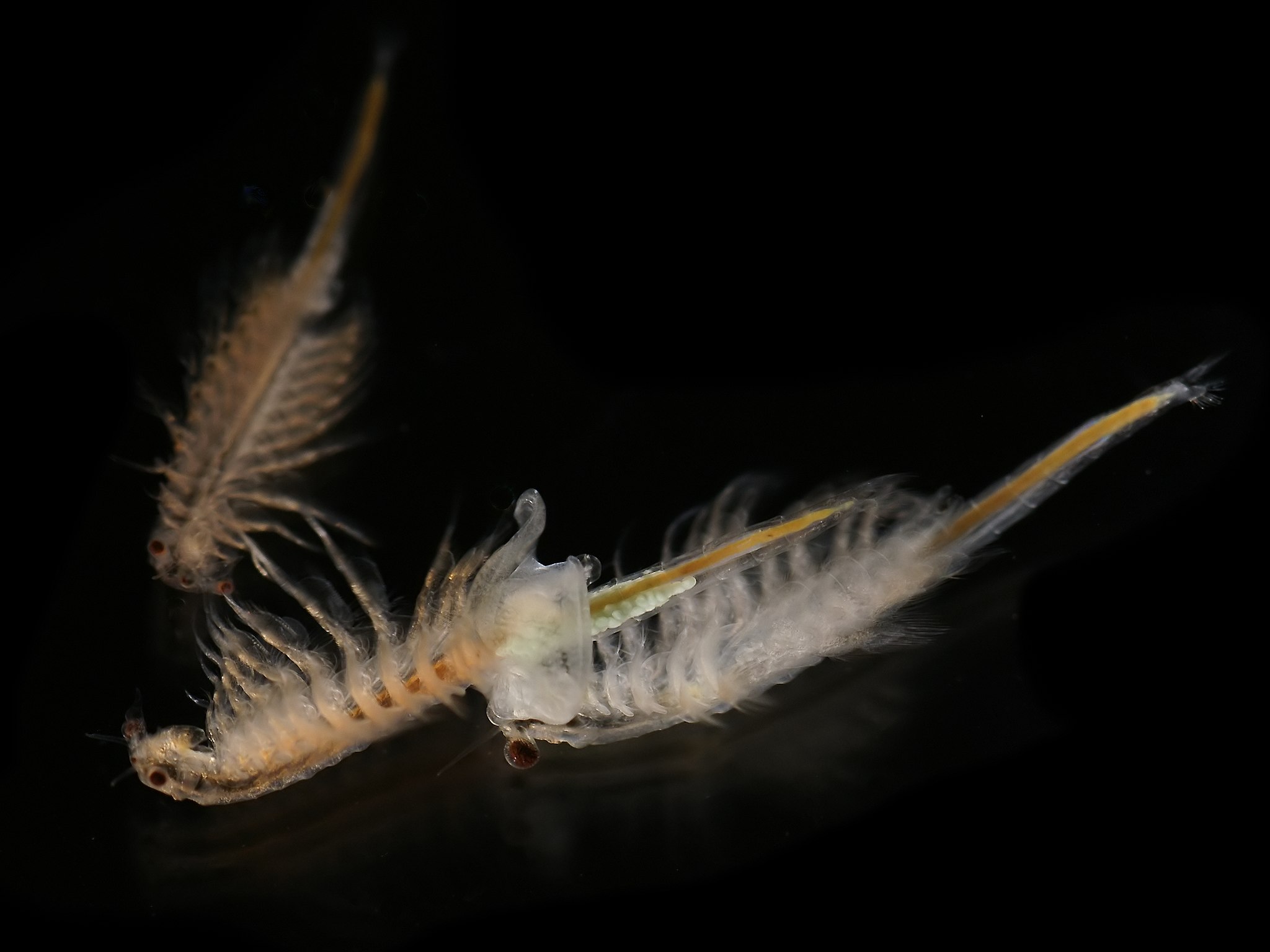The shrimp at the center of world hunger

Brine shrimp
Hailey Brown — What would happen if the Great Salt Lake dried up? This question usually sparks concern over toxic chemicals infiltrating the Salt Lake Valley’s air. But the impact would stretch much further. In fact, it would be felt around the world. The lake is home to the world’s largest and most sustainable brine shrimp population. Utah’s brine shrimp are essential to fish farming, an industry the U.N. says is vital for fighting world hunger.
Farmed fish feed people throughout the world. Brine shrimp are one component of the network that sustains the industry, responsible for feeding 10 million pounds of farmed seafood. Utah’s and other saline lake brine shrimp can survive the unstable environment by producing a cyst, which they then encase themselves in. The cysts are shelf stable, meaning the shrimp can be harvested and shipped worldwide to countries like Malaysia and Thailand, other nodes in the farmed seafood network. Once there, the shrimp are used to feed baby fish or shrimp. Timothy Hawkes, legal counsel for the Great Salt Lake Brine Shrimp Cooperative, told the Salt Lake Tribune “If the Great Salt Lake goes away, it would drive up costs and limit our ability to produce food in a lot of the developing world.” The lake is the largest producer, providing one-third of the world’s brine shrimp. As lakes that once produced brine shrimp become uninhabitable, the Great Salt Lake’s survival is of global concern.
The breadth of impact a dried-up Great Salt Lake would have can be understood through scale. At the local level, residents would suffer from effects like air pollution. Food would become more expensive and scarce in countries that rely on farmed fish to support their growing populations. The management of the brine shrimp population and the lake’s health thus concerns more people than just Utahns. So, a seemingly small industry, employing roughly 170 people throughout the state, is under the watch of the U.N.’s Food and Agriculture Organization, to ensure the maintenance of a vital food network.
Image source: © Hans Hillewaert, Creative Commons Attribution-Share Alike 4.0 International license, via Wikimedia Commons

